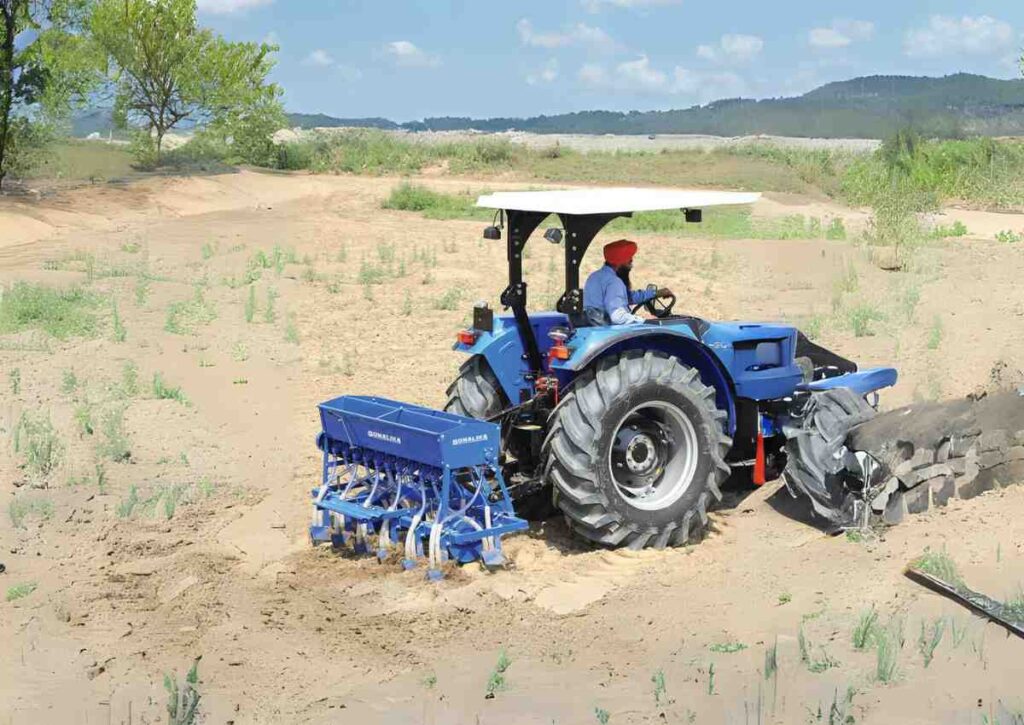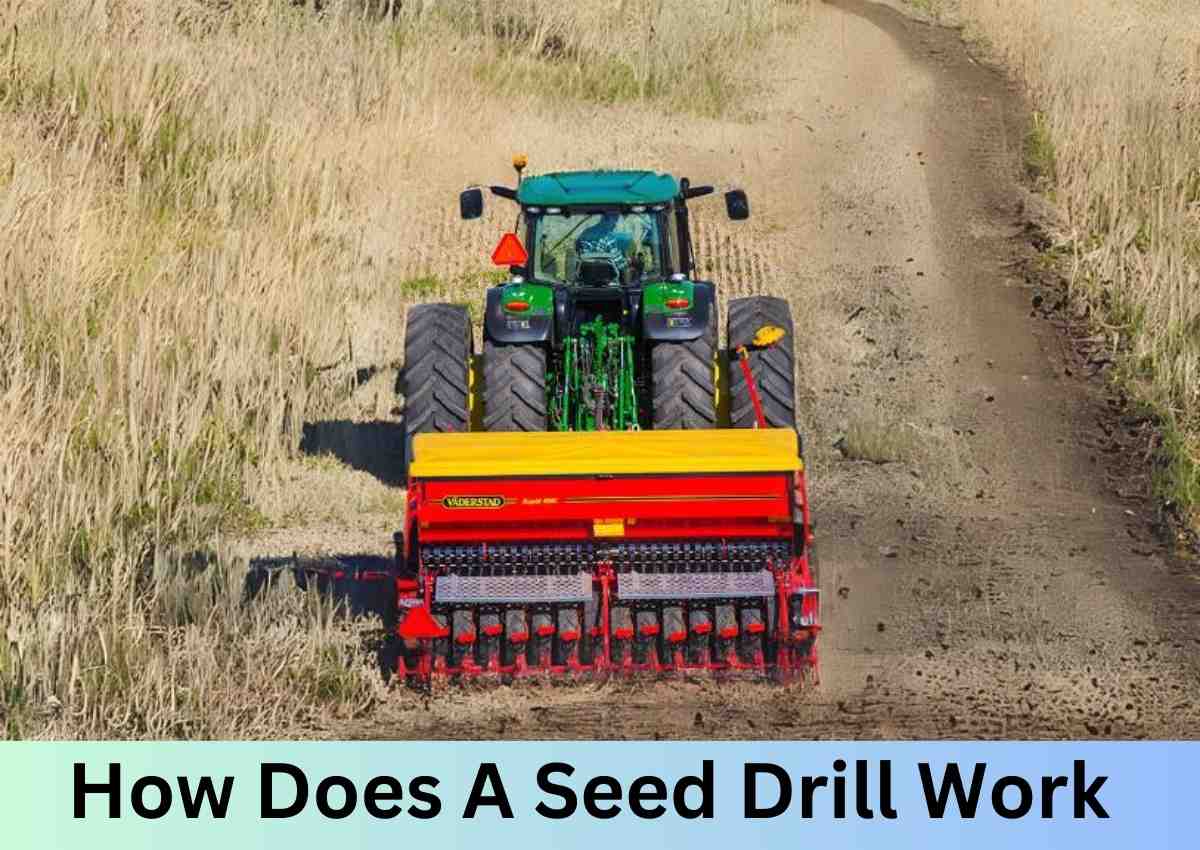Introduction
As the world’s population continues to burgeon, so does the need for efficient farming techniques that ensure a steady food supply.
In the realm of agriculture, innovations such as seed drills and seed funnels have played pivotal roles in sowing seeds with precision and enhancing crop yields. In this exploration, we delve into the mechanics and advantages of both of these devices.
Seed Drill
The seed drill, a mechanical marvel, was birthed in the early 18th century by Jethro Tull, an English agricultural pioneer.
Before its advent, farmers relied on the tedious and inefficient method of scattering seeds by hand.
Comprising a hopper for seed storage, a tube for seed transportation, and rotating disks for soil furrow creation, the seed drill can be either animal-drawn or tractor-mounted.
How Does a Seed Drill Work?

The seed drill operates on a straightforward principle. Seeds are stored in the hopper, positioned above the ground.
As the seed drill advances, seeds descend into a tube that extends to the ground, equipped with a small opening.
This opening, just above a rotating disk, allows seeds to fall into a furrow cut by the disk, subsequently covered by soil as the drill progresses. The depth of seed placement is adjustable, depending on the angle of the disk.
Advantages of Seed Drill
The seed drill offers numerous advantages over traditional seed-sowing methods. Firstly, it saves time and labor, enabling farmers to cover more land efficiently.
Secondly, it ensures uniformity in seed placement, fostering consistent crop growth and higher yields. Thirdly, it reduces seed wastage, prevents losses to birds or animals, and increases the likelihood of germination.
Seed Funnel
In contrast, the seed funnel is a simple, hand-held tool designed for smaller-scale planting in areas like gardens or raised beds.
Its uncomplicated design involves a funnel that directs seeds into the soil. Positioned over the soil, seeds are poured into the funnel’s top, flowing through its narrow spout and deposited into the soil at a uniform depth.
Advantages of Seed Funnel

Seed funnels have their own set of advantages, particularly in precision, control, simplicity, and cost-effectiveness.
They enable precise seed placement, offering control over the depth at which seeds are planted, and are easy to use without requiring special training or equipment.
Moreover, seed funnels are relatively inexpensive, making them a cost-effective solution for small-scale planting.
Disadvantages of Seed Funnel
However, using a seed funnel has its drawbacks. It can be time-consuming, especially for larger areas, and has limited capacity, suitable for only a small number of seeds at a time.
Additionally, seed funnels lack the functionality to apply fertilizers or other soil amendments simultaneously.
Conclusion
In conclusion, both seed drills and seed funnels serve as essential tools for planting seeds, each tailored to specific needs.
Seed drills, with their precision and efficiency, dominate modern agriculture, ideal for large-scale farming and multitasking with fertilizers.
On the other hand, seed funnels, simple and precise in small-scale applications, are cost-effective but less efficient for extensive planting.
Ultimately, the choice between a seed drill and a seed funnel hinges on the unique requirements of farmers or gardeners.
Despite their differences, both contribute significantly to modern agriculture’s efficiency and productivity. As we delve into the future of farming, these technological advancements continue to shape a sustainable and productive agricultural landscape.
FAQs
What is a seed drill used for?
A seed drill is a piece of equipment used for planting seeds in a precise, controlled manner. It can be used to plant seeds at a uniform depth and spacing, and can also be used to apply fertilizers or other soil amendments at the same time.
How does a seed drill work?
A seed drill typically consists of a hopper that holds the seeds, and a series of discs or tubes that distribute the seeds evenly into the soil. The seed drill is mounted on a tractor or other vehicle and is pulled across the field as it plants the seeds.
What is a seed funnel used for?
A seed funnel is a small, hand-held tool used for planting seeds in small areas, such as gardens or raised beds.
It allows for the precise placement of seeds and can be used to control the depth at which seeds are planted.
How do you use a seed funnel?
To use a seed funnel, simply place the funnel over the soil where you want to plant the seeds. Pour the seeds into the top part of the funnel, and allow them to flow through the narrow spout of the funnel and into the soil at a uniform depth.
Which is better, a seed drill or a seed funnel?
The choice between a seed drill and a seed funnel depends on the specific needs and goals of the farmer or gardener.
Seed drills are more efficient and suitable for larger-scale agriculture, while seed funnels are simpler and better suited for small-scale gardening or planting in tight spaces.
What is the mechanism of a seed drill?
A seed drill’s mechanism involves a hopper storing seeds, a tube transporting seeds to the ground, and rotating disks creating furrows to deposit seeds at a predetermined depth.
How does a seeder work?
A seeder dispenses seeds over an area, typically attached to a tractor. It can use various mechanisms, like air pressure or mechanical systems, to distribute seeds evenly.
What is the difference between a seed drill and a seeder?
A seed drill precisely places seeds at a set depth using rotating disks, while a seeder generally spreads seeds over an area without the same precision, often relying on air pressure or mechanical dispersal.
What makes a seed drill no-till?
A no-till seed drill is designed to plant seeds without prior tilling of the soil. It minimizes soil disturbance, preserving its structure, and is equipped to sow seeds directly into untilled fields or stubble from the previous crop.









